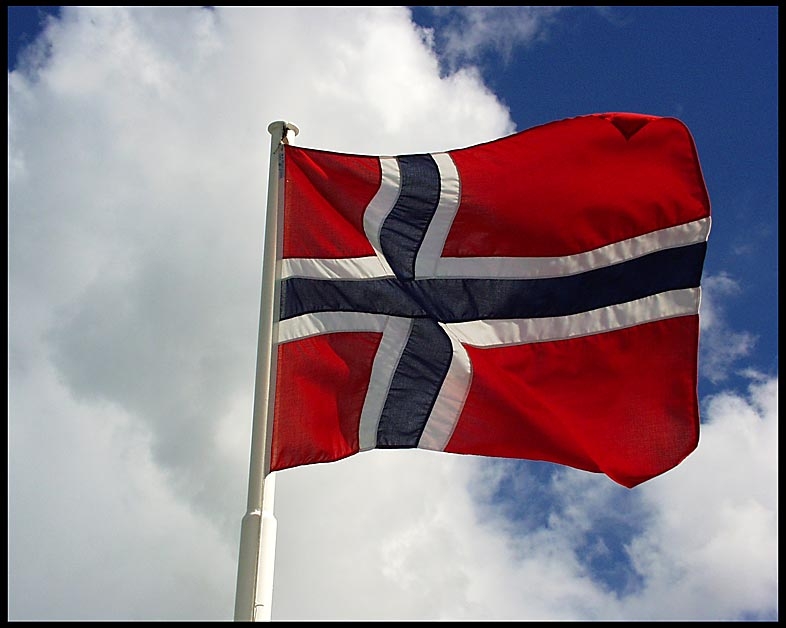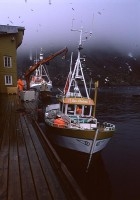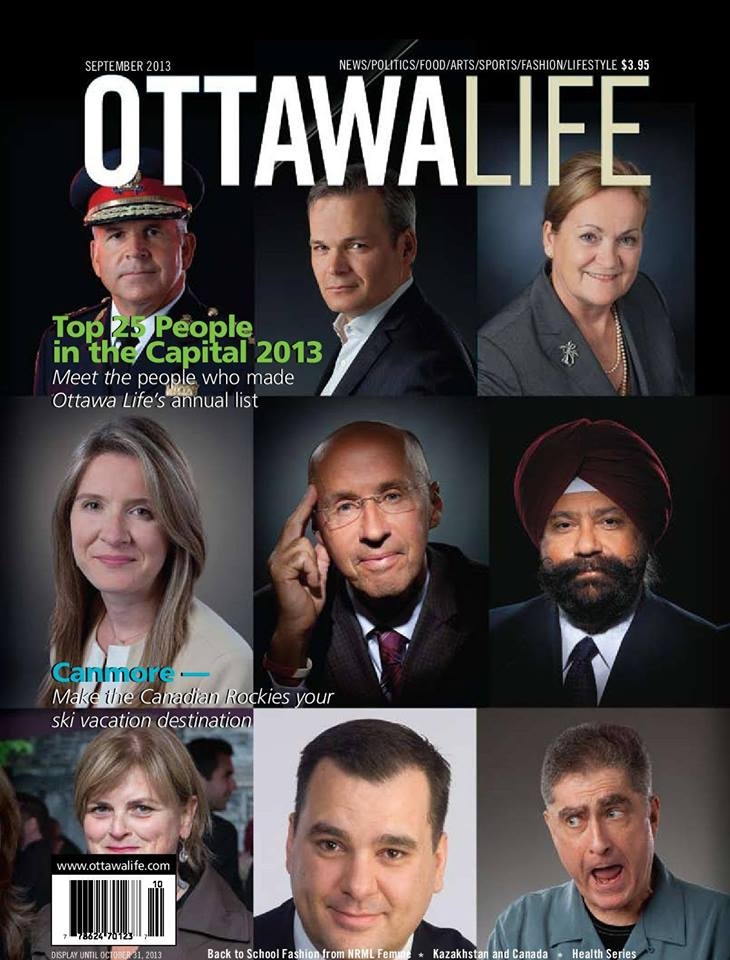
Public Servants Series: Norway Shows Canada a Better Way
In Canada, we have much to be thankful for. But as a society we still struggle with equality rights and, as wealthy as we are as a nation, we don’t provide a guaranteed standard of living to all our citizens, most notably many of our aboriginal people who still live in squalor and abject poverty. Many Canadians balk at the idea of universal day care. Opponents feel the state has no role in the upbringing of children and that this should be the sole responsibility of parents. Proponents believe universal daycare helps families and parents cope. Canada is having an identity crisis when it comes to environmental issues. Even with all the scientific data, many still question climate change.
After a recent trip to Oslo, Norway, it occurred to me that Canada can learn much from Norway’s political system and its values, which place an emphasis on caring for its people and treating the environment with respect. Norwegian values are rooted in democratic ideals. The United Nations’ Human Development Index consistently ranks Norway in the Top 3 of the world’s most prosperous countries and best countries to live in. So it makes sense to see what we can learn from a country that is obviously doing a lot of things right.
Like Canada, Norway is a constitutional monarchy. The Norwegian king and his family have no real political power, but are an important symbol and mean a great deal to the people of Norway. This was clearly evident in 2011 after the Anders Behring Breivik massacre that killed 77 people and wounded dozens more. Norway’s King Harald V and Queen Sonja led the nation in mourning at an emotional memorial mass that helped the country begin the healing process. In Canada, the importance of the monarchy has been reinforced in the past year with the outpouring of support for the celebration of Queen Elizabeth’s 60th Anniversary and the visit of the young royals, William and Kate, in the summer of 2011.
Norway’s secret as one of the world’s great liberal democracies is that it values hard work, a strong work ethic and free enterprise. However, Norwegians also want the chance for prosperity for all their citizens. For them, this means having as few people suffering as possible, healthy children and crime-free streets. Collectively, Norwegians have developed an egalitarian model to achieve these goals. This model, delivered by the Norwegian government, manifests itself throughout Norwegian society in many ways. Norway was one of the first nations to give women the right to vote. Norway was also among the first countries in the world to elect a female prime minister. Today, 40 per cent of the representatives in Norway’s Parliament are female.

Gender equality has changed the Norwegian male’s role as a father. Norway has a paternity leave quota, so that fathers can take extended time off to be with their children. This has helped make the mixing of careers and family a lot easier. In Norway, it is not uncommon for a man to make arrangements to work flex time so he can spend longer periods with his family or leave work early to pick up children from school or daycares. There is no financial penalty for doing so. In fact, this process is applauded and rewarded in Norway and professionals have embraced it.
While in Oslo, I met with Trond Gabrielson, a thirtysomething advisor at the Ministry of Foreign Affairs. His wife works professionally as a journalist in Oslo. Gabrielson has the duty of picking up his kids from daycares each day at 4pm. He leaves his office at 3:15pm and takes a commuter train 30 kilometres north to the picturesque village of Drammen. He then goes to a small day care centre to pick up two of his children and walks up the street to pick up the youngest at another daycare. (Daycares in Norway are also subsidized by taxpayers.) Then they all walk home. The kids are excited to see their dad and tell him about the day. Gabrielson said he cherishes these moments in his daily routine. The trade-off is that he must take the early train each morning – his wife has drop-off duty for the children. Gabrielson finds he is more efficient at work because he has to make that train at 3:15 for the kids. He notes that there is no professional penalty for leaving mid-afternoon and if a meeting is scheduled that he cannot make, his colleagues will brief him later via email. Gabrielson says it is quite normal for everyone in the office to have a similar experience. Work doesn’t suffer. Home life is better and time with the children is increased. “In Norway, our most cherished value and our real wealth – is our children,” he notes.
Like Canada, Norway has relied heavily on primary industries such as forestry, agriculture, fisheries, oil and gas, and mining. However, in recent years, Norway has led the world in investing heavily in research and development, resulting in its emergence as a world player in information technology, biotechnology, nanotechnology, automotive, hydrogen and renewable energy. At the same time, its traditional industries such as agriculture and fisheries products have spun out lucrative new industries in organic foods and aquaculture. In addition, Norway’s oil and gas production continues to grow and it is now the wealthiest energy export country in Europe and 14th globally.
Norway is constantly developing its natural resources to produce energy for home and for global export. Unlike Canada, the Norwegians are investing hundreds of millions of dollars in environmental protection and innovation and the fight against climate change as part of their overall energy strategy. The Norwegian Meteorological Institute (NMI), with main offices located in Oslo, Bergen and Tromsø, has over 500 employees and another 650 paid observers of various kinds around the country who provide weather forecasts for Norway and its coastal waters as well as more specialized services such as ice monitoring in Arctic areas, oil spill detection, and search and rescue forecast. NMI marine forecasts are issued commercially to assist oil companies and more generally for the public. Stale Skramstad – a security and emergency planning manager at NMI, says that “NMI’s mission is to protect life, property and the environment, and to provide the meteorological services required by society.”

Contrast this against the Canadian Conservative government decision to cut hundreds of millions of dollars to meteorological and climate change research and sustainable develop-ment planning and research. The elimination or severe reduction of funds for research into climate change and the Arctic has especially serious implications, given that the Canadian Arctic is warming faster than almost any other region on earth. Scientists say that these sharp cutbacks will mean a drastic shortage of funds to monitor huge environmental changes in Canada’s Arctic, including melting sea ice, thawing permafrost, a rapidly changing tundra environment, and widespread impacts on fauna and flora. When I asked Stale Skramstad what he thinks of Canada cutting these services, he looked at me perplexed and said: “To what benefit are they doing that?” I, of course, can’t explain.
Later I meet Oyvind Aaring, a project leader with Norway’s Ministry of the Environment. Aaring points out that Norway has established a climate and energy fund to promote technological advances in industry. The aim is to develop technology that reduces greenhouse gas emissions. The fund will be increased from $1.2 billion in 2013 to $8 billion in 2016. He notes that the fund and a strict sustainability policy are key to Norway’s global competitiveness in the fisheries and energy industries. “These industries are important to Norway – they sustain our quality of life. We feel we must protect the environment to ensure the long-term sustainability of the resources and the future generations in Norway.” When I comment that some argue that these types of government projects sometimes waste money or cause delays, Aaring is very matter-of-fact. “Yes, if they are not run properly. We believe in science and facts in Norway and you need experts to determine these things.”
In Norway, the government has significantly strengthened rules relating to its fisheries protection, environmental assessment, endangered species, and national parks, whereas in Canada, the Harper government has greatly weakened these rules. For example, Canada’s Fisheries Act will no longer be focused on habitat protection; instead, it will restrict itself largely to the commercial aspects of resource harvesting. In Norway, protection of fish habitat is the ministry’s number one priority. Ministry personnel see it as the underpinning of everything else they do. This policy has made Norway the most successful fishery in the world. In 1990, there were 17,000 registered vessels in Norway. Twenty years later, the number has been reduced to 6,000. The number of fishermen has also been substantially reduced. Nonetheless, the catch volume and the value have increased. In addition, the Norwegian fishing fleet remains diversified – with large and small vessels along the entire coastline.

In a speech in Oslo last year, Lisbeth Berg-Hansen, Norway’s Minister of Fisheries and Coastal Affairs, said that “the principle of sustainability is a cornerstone of Norwegian fisheries management. Based on previous experiences of fish stock being reduced, we all know that the fishery resources are limited and need to be managed accordingly. I believe that Norway is on the cutting edge of fisheries management. We have implemented a scientifically-based management, where the precautionary principle is crucial.” So why has the Canadian government gone in the opposite direction? Four former federal fisheries ministers also question the government’s reasons behind these changes to the Fisheries Act: Mulroney-era Conservatives Tom Siddon and John Fraser, and Liberals Herb Dhaliwal and David Anderson, who both served under Jean Chrétien, said in an open letter in June 2012 that they don’t believe federal ministers have given plausible explanations for these changes. It is indeed perplexing. It’s almost as if the Conservatives don’t trust science.
Just as odd is the Harper Conservatives’ recent decision to change ocean dumping to allow the Minister of the Environment to make decisions on permitting. In Norway, this would never be allowed, as citizens believe any dumping into Norwegian waters must be highly regulated and controlled and never left to be resolved by a politician.
Continued in Part Two: Norway Shows Canada a Better Way









